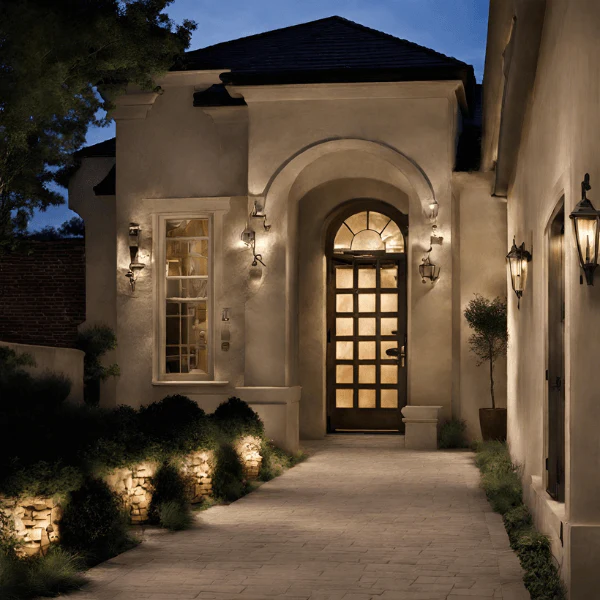Outdoor lighting technology has transformed how we illuminate our homes. Motion sensor wall lights now dominate the market for good reason. They deliver unmatched security while slashing energy costs. These smart fixtures work perfectly for front porches, back patios, garden walkways, and garage areas.
Understanding Motion Sensor Technology
Motion sensor outdoor wall lights use advanced detection technology. They automatically activate when movement is detected within their range. The most common type uses passive infrared (PIR) sensors. These sensors detect heat signatures from moving objects.
When the sensor identifies motion, it triggers the light immediately. The light stays on for 30 seconds to several minutes. Users can adjust this timing based on preferences.
Modern sensors feature adjustable sensitivity settings and customizable detection ranges. Weather-resistant construction ensures reliable outdoor operation. Advanced sensors minimize false activations from wind-blown debris while maintaining consistent performance in various environmental conditions.
Key Benefits of Motion Sensor Outdoor Wall Lights
1. Enhanced Security Protection
Motion sensor lights act as powerful deterrents against burglars and intruders. They create sudden illumination when movement is detected. This startles unwanted visitors and alerts homeowners to potential threats. The automatic response serves as an early warning system for suspicious activity.
2. Improved Safety for Residents
These lights automatically illuminate pathways and entrances when people approach. This reduces the risk of trips and falls in dark conditions. Stairs, walkways, and door areas become safer for family members and guests. Winter months with limited daylight especially benefit from this safety feature.
3. Significant Energy Savings
Motion sensor lights only operate when needed, not all night long. This dramatically reduces electricity consumption compared to traditional outdoor lighting. LED technology further enhances efficiency by using 80% less energy than incandescent bulbs. The combination results in substantial cost savings on monthly electric bills.
4. Hands-Free Convenience
These lights eliminate the need for manual switches or timers. They provide automatic illumination whenever someone approaches. No more fumbling for light switches in the dark. No more remembering to turn lights on or off manually.
5. Extended Bulb Lifespan
Motion activation means lights aren’t running continuously throughout the night. This significantly extends the lifespan of LED bulbs and components. Less frequent replacements reduce maintenance costs and hassle. Quality LED bulbs can last over 25,000 hours with motion sensor operation.
6. Customizable Operation Settings
Modern motion sensor lights offer adjustable sensitivity levels. Users can customize detection ranges and illumination duration. Photocell technology prevents daytime activation to save energy. Timer settings allow for different operation modes based on user preferences.
7. Increased Property Value
Well-designed outdoor lighting with motion sensors enhances curb appeal. Security features are attractive to potential buyers. Energy-efficient lighting systems add value to home resale prospects. Professional installation creates a polished, modern appearance.
8. Environmental Benefits
Reduced energy consumption means lower carbon footprint. LED technology uses environmentally friendly materials. Less frequent bulb replacements reduce waste. Motion activation minimizes light pollution in residential areas.
Advanced Features and Smart Integration
Smartphone Connectivity and App Control
Modern motion sensor lights include smartphone connectivity for remote monitoring and control. Dedicated mobile applications allow users to adjust settings and receive motion detection notifications.
Adjustable Sensitivity Settings
Adjustable sensitivity settings help minimize false activations while ensuring reliable detection of genuine security threats. Users can customize detection levels based on their specific environment and requirements.
Dual-Sensor Technology
Some models feature dual-sensor technology that requires activation from multiple sensors before triggering illumination. This advanced system reduces false positives from environmental factors while maintaining reliable operation for actual security threats.
Choosing the Right Motion Sensor Light
Assessing Your Coverage Area
Consider the size of the area that needs illumination coverage. Measure the distance from the mounting location to the furthest point you want to detect. Determine if you need narrow-focused detection or wide-area coverage. Multiple units may be necessary for larger properties. Complex layouts often require strategic placement planning.
Determining Brightness Requirements
Evaluate the level of illumination needed for your specific application. Entryways typically require brighter lighting than pathway applications. Consider whether you need gentle ambient lighting or high-intensity security illumination. LED lumens output ranges from 500 to 3000 lumens. Most residential applications fall within this range.
Power Source Options
Hardwired installations provide consistent power. They require electrical connections and professional installation. Battery-powered units offer installation flexibility. They need regular battery replacements for continued operation. Solar-powered lights work independently without electrical connections. They require adequate sunlight exposure for charging. Consider your property’s electrical infrastructure and maintenance preferences.
Weather Resistance and Durability
Check the IP rating to ensure adequate weather protection. Look for corrosion-resistant materials like aluminum or stainless steel. Consider extreme temperature ranges in your area. Evaluate seasonal weather conditions and exposure levels. Quality fixtures should withstand wind, rain, snow, and UV exposure. Proper weather sealing prevents moisture damage.
Smart Features and Connectivity
Decide if you want basic motion detection or advanced features. WiFi-enabled models offer remote control capabilities. They provide monitoring through smartphone applications. Some units include scheduling features for automated operation. Integration with home automation systems is available. Consider compatibility with existing smart home devices. Voice assistant integration adds convenience.
Budget and Long-Term Value
Set a realistic budget that includes purchase price and installation costs. Consider energy savings as a long-term benefit. Reduced maintenance costs add value over time. Higher-quality units typically offer better durability. Longer warranties provide additional peace of mind. Factor in replacement costs for batteries or bulbs. Calculate total ownership costs over the fixture’s lifespan.
Conclusion
Motion sensor outdoor wall lights represent an excellent investment for homeowners. They enhance security, improve safety, and reduce energy consumption. The combination of automatic operation and LED efficiency makes these fixtures ideal for modern applications. Consider detection range, sensitivity settings, and weather resistance when selecting units. Proper installation and regular maintenance ensure optimal performance and longevity.


